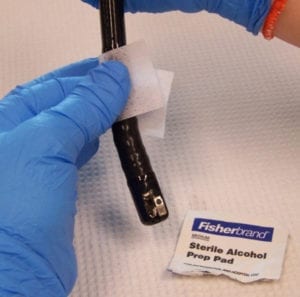Olympus Medical Scopes Linked to Superbug Outbreaks
When did Olympus first learn about the design problems inherent in the specialized medical scopes it peddles? Did they have plans to redesign these scopes to make them safer for patients? These are the questions at the top of U.S. Representative Ted Lieu’s (D-CA) mind after he sent a letter to the corporation earlier this week demanding answers. The scopes have been linked to superbug infections at two separate Los Angeles hospitals last month. Two have already died, and eleven remain infected.
How do infections like this occur, and how are they spread by reusable medical devices? Many patients don’t like to think about the reusability of medical devices in a hospital setting. How many bones has that oscillating saw vibrated through? How many people have had colonoscopies with the same exact colonoscope?
 When people do think about reusable medical devices, albeit rarely, intensive disinfecting technology likely comes to mind. Perhaps you’re envisioning a shiny autoclave (high pressure steam disinfection) or a UV light with disinfecting rays? The truth is a little duller – most reusable endoscopes are bathed in chemical disinfectants – and sometimes those disinfectants don’t work as well as they should on certain bacteria, especially the resistant kind.
When people do think about reusable medical devices, albeit rarely, intensive disinfecting technology likely comes to mind. Perhaps you’re envisioning a shiny autoclave (high pressure steam disinfection) or a UV light with disinfecting rays? The truth is a little duller – most reusable endoscopes are bathed in chemical disinfectants – and sometimes those disinfectants don’t work as well as they should on certain bacteria, especially the resistant kind.
How can Olympus be blamed for the infection of patients through its endoscopes if the culprit is a superbug? Well, the design of an endoscope (think tiny crevices and hard to clean areas) can contribute to a perpetual bioburden (read: microbial contamination). Olympus has just recently redesigned its endoscopes, and has not submitted the new design to the FDA for approval. The company is reported to have started selling the update to its previous product in 2010 – despite not receiving clearance. Because of how critical the devices are to day-to-day care in hospitals, the FDA has refused to recall the endoscopes. The devices can cost almost $40,000 each and are used in nearly 500,000 procedures in the U.S. alone every year.
The risk of being infected with disease in a hospital setting is surely higher than normal. I’m sure that we all hope that proper safety and sterilization protocols are in effect whenever we enter any hospital or doctor’s office. However, the FDA also has a responsibility to ensure that medical devices used in hospitals are designed properly and are physically possible to disinfect, especially in wake of the proliferation of antibiotic-resistant bacteria. Some victims (and their families) are already filing lawsuits over these scope-related infections. Hopefully, the litigation process will shed more light on the gaps in safety that led to these unfortunate (and preventable) patient injuries and deaths.
Share This


